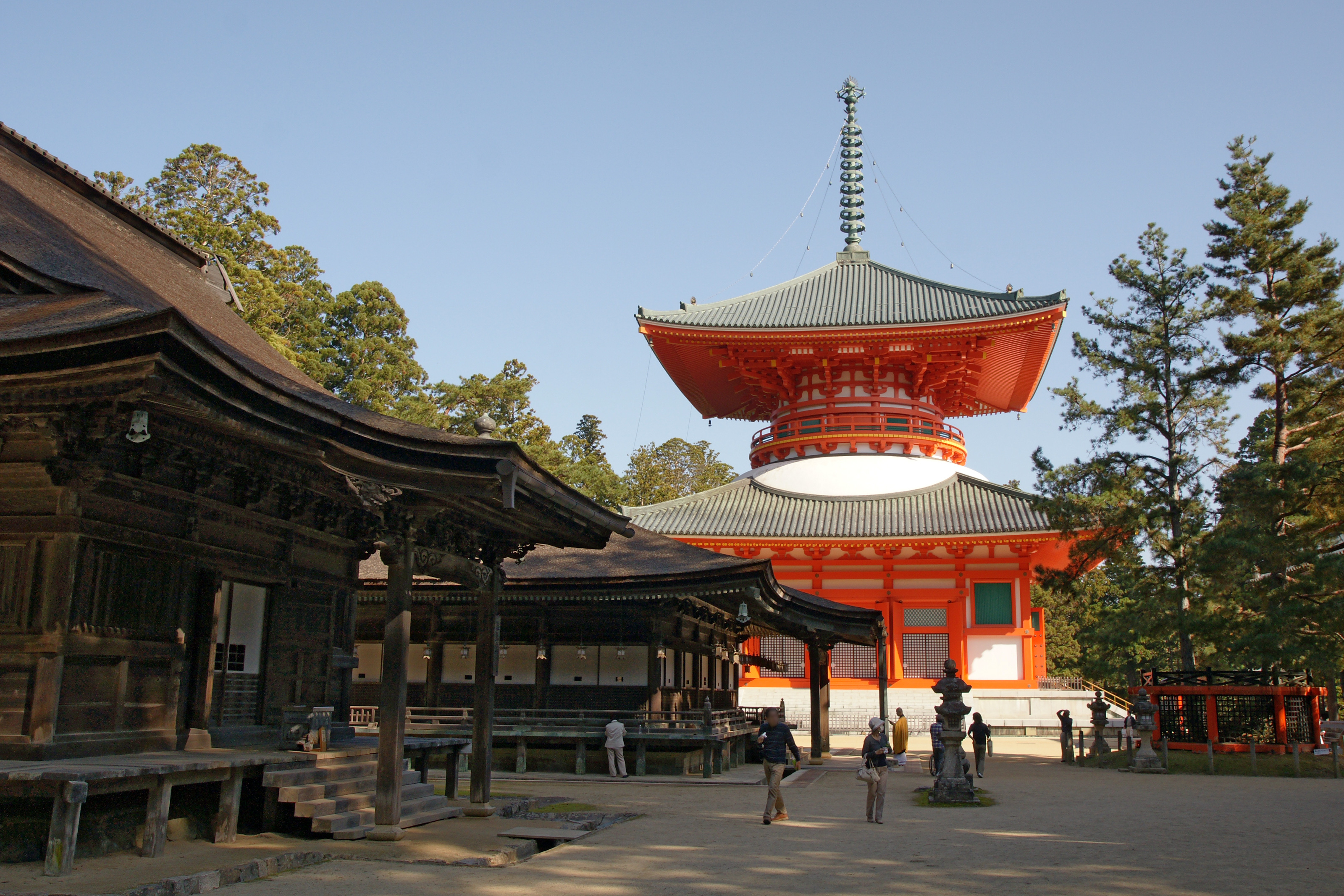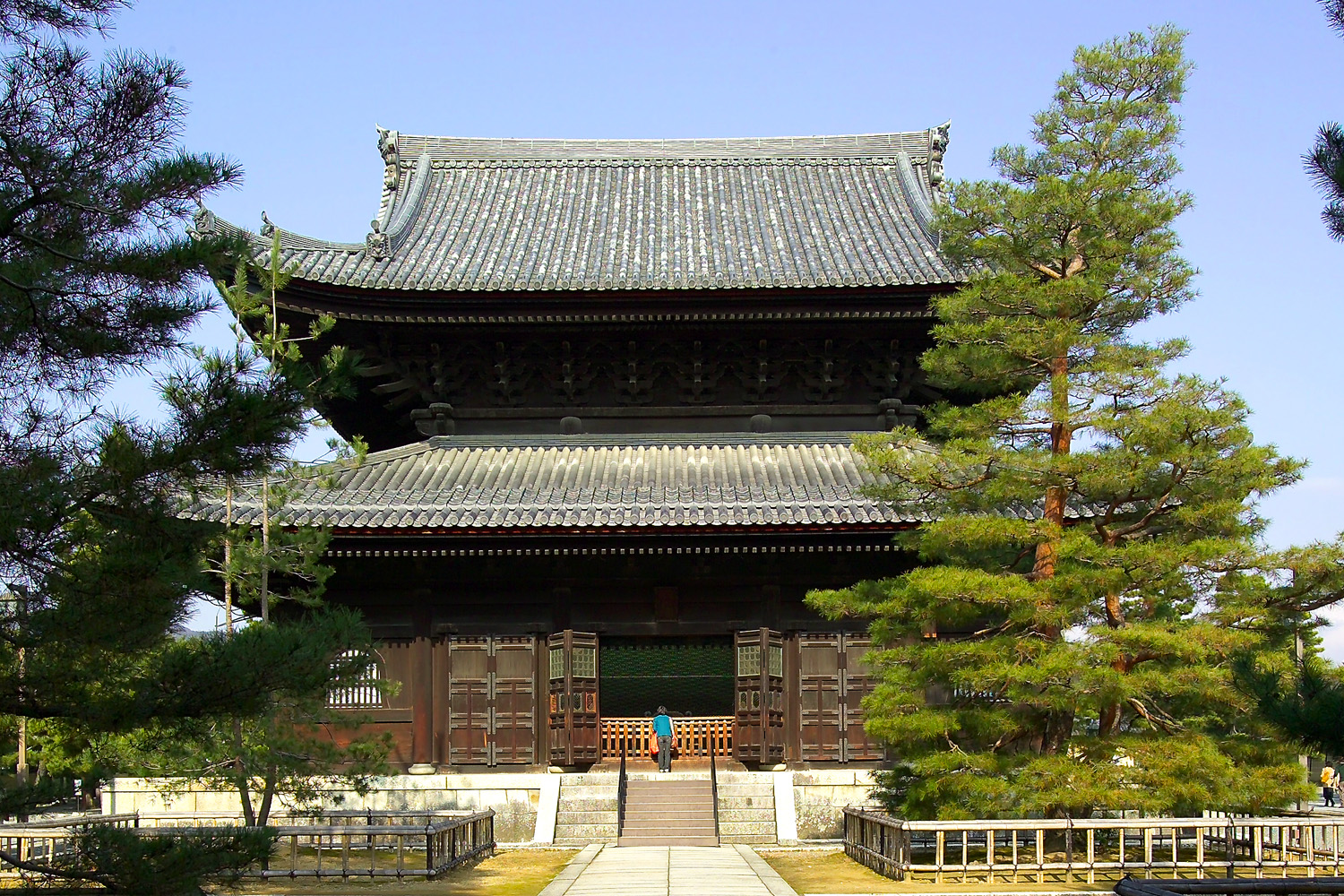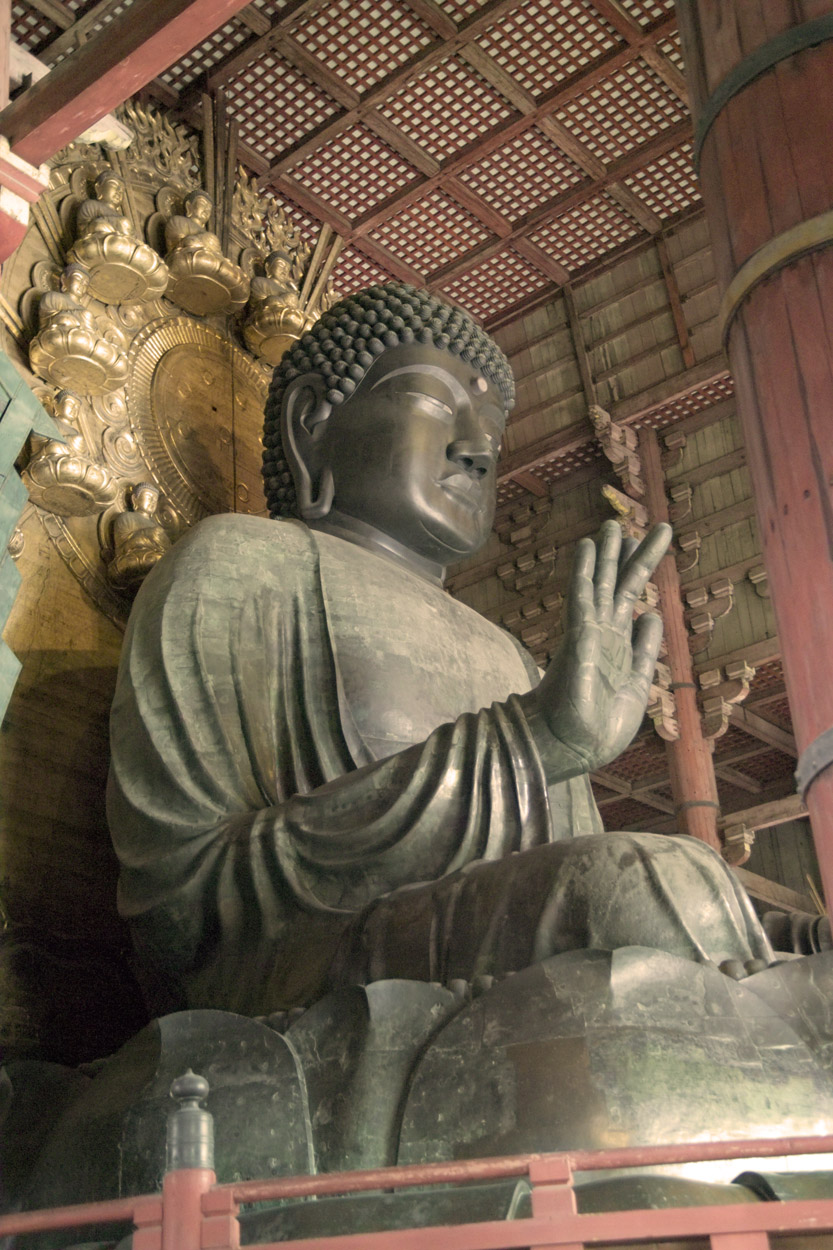|
Shōfuku-ji (Odawara)
is a Shingon sect Buddhist temple located in the northeastern portion of the city of Odawara, Kanagawa Prefecture, Japan. It is more popularly known as the , after its primary object of worship. Shōfuku-ji is the 5th temple in the '' Bandō Sanjūsankasho'' pilgrimage circuit of 33 Buddhist temples in the Kantō region of eastern Japan to the Bodhisattva Kannon. History According to temple legend, Shōfuku-ji was founded in the Nara period by the priest Dōkyō for the soul of the deceased Empress Kōken, and housed an image of Kannon brought to Japan by the famed Tang dynasty priest Guanjin, which had been owned by the Empress. However, no historical documents have survived to substantiate this legend, and the history of the temple is thus uncertain. The temple was relocated to its present location in 830 AD. Shōfuku-ji is mentioned in the Kamakura period story, ''Soga Monogatari'', and enjoyed the patronage of the Go-Hōjō clan during the Sengoku period. The current Hon ... [...More Info...] [...Related Items...] OR: [Wikipedia] [Google] [Baidu] |
Shingon
is one of the major schools of Buddhism in Japan and one of the few surviving Vajrayana lineages in East Asian Buddhism. It is a form of Japanese Esoteric Buddhism and is sometimes called "Tōmitsu" (東密 lit. "Esoteric [Buddhism] of Tō-ji"). The word ''shingon'' is the Kan-on, Japanese reading of the Traditional Chinese characters, Chinese word ('), which is the translation of the Sanskrit word mantra. The Chinese Esoteric Buddhism, Zhēnyán lineage was founded in China (c. 7th–8th centuries) by Indian Vajracharya, vajrācāryas (esoteric masters) like Śubhakarasiṃha, Vajrabodhi and Amoghavajra. These esoteric teachings would later flourish in Japan under the auspices of a Buddhist monk named Kūkai (, 774–835), who traveled to Tang dynasty, Tang China and received these esoteric transmissions from a Chinese master named Huiguo (746–805). Kūkai established his tradition at Mount Kōya (in Wakayama Prefecture), which remains the central pilgrimage center of Sh ... [...More Info...] [...Related Items...] OR: [Wikipedia] [Google] [Baidu] |
Tang Dynasty
The Tang dynasty (, ; zh, c=唐朝), or the Tang Empire, was an Dynasties of China, imperial dynasty of China that ruled from 618 to 907, with an Wu Zhou, interregnum between 690 and 705. It was preceded by the Sui dynasty and followed by the Five Dynasties and Ten Kingdoms period. Historians generally regard the Tang as a high point in Chinese civilisation, and a Golden age (metaphor), golden age of cosmopolitan culture. Tang territory, acquired through the military campaigns of its early rulers, rivalled that of the Han dynasty. The House of Li, Li family founded the dynasty after taking advantage of a period of Sui decline and precipitating their final collapse, in turn inaugurating a period of progress and stability in the first half of the dynasty's rule. The dynasty was formally interrupted during 690–705 when Empress Wu Zetian seized the throne, proclaiming the Wu Zhou dynasty and becoming the only legitimate Chinese empress regnant. The An Lushan rebellion (755 ... [...More Info...] [...Related Items...] OR: [Wikipedia] [Google] [Baidu] |
Iiyama Kannon
is a Shingon, Shingon sect Buddhism, Buddhist temple located outside of Atsugi, Kanagawa, Atsugi, Kanagawa Prefecture, Japan. It is more popularly known as the , after its primary object of worship. It is the 6th temple in the Bandō Sanjūsankasho pilgrimage circuit of 33 Buddhist temples in the Kantō region of eastern Japan to the goddess Guanyin, Kannon. History According to temple legend, Chōkoku-ji was founded by either the wandering holy ascetic Gyōki around 725 AD, or the famed prelate Kūkai from 810-835 AD. However, no historical documents have survived to substantiate this legend, and the history of the temple is thus uncertain. During the Kamakura period, the temple was a center for ecumenical studies linking the Shingon sect with the Tendai, Risshū (Buddhism), Ritsu and Zen sects, along with Kakuon-ji in Kamakura, Kanagawa, Kamakura and Shōmyo-ji in Kanazawa-ku, Yokohama, Mutsuura. At present, the temple belongs to the Kōyasan Shingon-shū, Kōyasan Shin ... [...More Info...] [...Related Items...] OR: [Wikipedia] [Google] [Baidu] |
Hase-dera (Kamakura)
, commonly called the , is one of the Buddhist temples in the city of Kamakura in Kanagawa Prefecture, Japan, famous for housing a massive wooden statue of Kannon. The temple originally belonged to the Tendai sect of Buddhism, but eventually became an independent temple of the Jōdo-shū.English language pamphlet from Kaikozan Hasedera History Legend has it that the temple was established in the Tenpyō era (729-749 C.E.). However, documents at the temple suggest that the temple really came into its own during the Kamakura period (1192-1333). Statue The main statue of Kannon is one of the largest wooden statues in Japan, with a height of It is made from camphor wood, with gold gilding. It has 11 heads, each of which represents a different phase in the search for enlightenment. According to legend, the statue is one of two images of Kannon carved by a monk named Tokudō in 721. The camphor tree was so large, according to legend, that he decided that he could carve two statues ... [...More Info...] [...Related Items...] OR: [Wikipedia] [Google] [Baidu] |
Gohonzon
is a generic term for a venerated religious object in Japanese Buddhism. It may take the form of a scroll or statuary. The term typically refers to the mainstream use of venerated objects within Nichiren Buddhism, referring to the calligraphic paper mandala inscribed by the 13th Japanese Buddhist priest Nichiren to which devotional chanting is directed. Linguistically, the root word derives from ancient word , signifying a devotional object of respect or worship, and with the honorific prefix. Varying Nichiren groups accord their own meanings to the term in different ways, signifying their treatment of the object: * "Object of Devotion" — Soka Gakkai * "Object of Worship" — Nichiren Shōshū * "The Great Mandala, Venerated Supreme" — Nichiren-shū sects Paper scroll are sometimes known as or . The term is used for statuary. are often enshrined within an altar shrine (). Description Nichiren himself attached the greatest importance to his inscription of ... [...More Info...] [...Related Items...] OR: [Wikipedia] [Google] [Baidu] |
Japanese Buddhism
Buddhism was first established in Japan in the 6th century CE. Most of the Japanese Buddhists belong to new schools of Buddhism which were established in the Kamakura period (1185-1333). During the Edo period (1603–1868), Buddhism was controlled by the feudal Shogunate. The Meiji period (1868–1912) saw a strong response against Buddhism, with persecution and a forced separation between Buddhism and Shinto ('' Shinbutsu bunri''). The largest sects of Japanese Buddhism are Pure Land Buddhism with 22 million believers, followed by Nichiren Buddhism with 10 million believers, Shingon Buddhism with 5.4 million, Zen Buddhism with 5.3 million, Tendai Buddhism with 2.8 million, and only about 700,000 for the six old schools established in the Nara period (710-794). History Early Buddhism (5th-13th century) Arrival and initial spread of Buddhism Originating in India, Buddhism arrived in Japan by first making its way to China and Korea through the Silk Road and then tr ... [...More Info...] [...Related Items...] OR: [Wikipedia] [Google] [Baidu] |
Main Hall (Japanese Buddhism)
Main hall or Main Temple is the building within a Japanese Buddhist monastery compound ('' garan'') which enshrines the main object of veneration.Kōjien Japanese dictionary Because the various denominations deliberately use different terms, this single English term translates several Japanese words, among them ''butsuden'', ''butsu-dō'', ''kondō'', ''konpon-chūdō'', and ''hondō''. ''Hondō'' is its exact Japanese equivalent, while the others are more specialized words used by particular sects or for edifices having a particular structure. Kondō (Asuka and Nara periods) The term started to be used during the Asuka and Nara periods. A ''kondō'' is the centerpiece of an ancient Buddhist temple's ''garan'' in Japan. The origin of the name is uncertain, but it may derive from the perceived preciousness of its content, or from the fact that the interior was lined with gold. This is the name used by the oldest temples in the country.Iwanami Nihonshi Jiten A ''kondō'', for exa ... [...More Info...] [...Related Items...] OR: [Wikipedia] [Google] [Baidu] |
Sengoku Period
The was the period in History of Japan, Japanese history in which civil wars and social upheavals took place almost continuously in the 15th and 16th centuries. The Kyōtoku incident (1454), Ōnin War (1467), or (1493) are generally chosen as the period's start date, but there are many competing historiographies for its end date, ranging from 1568, the date of Oda Nobunaga#Ise campaign, Omi campaign, and march to Kyoto, Oda Nobunaga's march on Kyoto, to the suppression of the Shimabara Rebellion in 1638, deep into what was traditionally considered the Edo period. Regardless of the dates chosen, the Sengoku period overlaps substantially with the Muromachi period (1336–1573). This period was characterized by the overthrow of a superior power by a subordinate one. The Ashikaga shogunate, the ''de facto'' central government, declined and the , a local power, seized wider political influence. The people rebelled against the feudal lords in revolts known as . The period saw a break ... [...More Info...] [...Related Items...] OR: [Wikipedia] [Google] [Baidu] |
Kamakura Period
The is a period of History of Japan, Japanese history that marks the governance by the Kamakura shogunate, officially established in 1192 in Kamakura, Kanagawa, Kamakura by the first ''shōgun'' Minamoto no Yoritomo after the conclusion of the Genpei War, which saw the struggle between the Taira clan, Taira and Minamoto clan, Minamoto clans. The period is known for the emergence of the samurai, the warrior caste, and for the establishment of feudalism in Japan. There are various theories as to the year in which the Kamakura period and Kamakura shogunate began. In the past, the most popular theory was that the year was 1192, when Minamoto no Yoritomo was appointed . Later, the prevailing theory was that the year was 1185, when Yoritomo established the , which controlled military and police power in various regions, and the , which was in charge of tax collection and land administration. Japanese history textbooks as of 2016 do not specify a specific year for the beginning of the K ... [...More Info...] [...Related Items...] OR: [Wikipedia] [Google] [Baidu] |
Jianzhen
Jianzhen (688–763), also known by his Japanese name Ganjin (,), was a Tang Chinese monk who helped to propagate Buddhism in Japan. In the eleven years from 743 to 754, Jianzhen attempted to visit Japan some six times, arriving in the year 753 and founding Tōshōdai-ji in Nara. When he finally succeeded on his sixth attempt, he had lost his eyesight as a result of an infection acquired during his journeys. Jianzhen's life story and voyage are described in the scroll, "The Sea Journey to the East of a Great Bonze from the Tang Dynasty." Life Jianzhen was born in Jiangyin county in Guangling Prefecture (present day Yangzhou), China, with the surname of Chunyu (). At the age of fourteen, he became a disciple of Dayun Temple (). At twenty he travelled to Chang'an for study and returned six years later, eventually becoming abbot of Daming Temple. Besides his learning in the Tripiṭaka, Jianzhen is also said to have been an expert in medicine. He opened the Buddhist temple as ... [...More Info...] [...Related Items...] OR: [Wikipedia] [Google] [Baidu] |
Empress Kōken
Empress Kōken (born Abe, known as Empress Shōtoku during her second reign; 718–770) was the 46th and 48th monarch of Japan according to the traditional order of succession. She was born to Crown Prince Obito (the future Emperor Shōmu) and his consort Fujiwara Asukabehime; seeking to protect the bloodline of Prince Kusakabe, her father proclaimed her the first crown princess in Japanese history in 738. She became the Empress Regnant in 749, after her father retired to become a Buddhist monk. With the backing of her mother (now Dowager Empress Kōmyō) and her mother's nephew Fujiwara no Nakamaro, she was able to outmaneuver a largely hostile (Council of State). Her father died in 756, and named a cousin unrelated to the Fujiwara as her heir; this outraged Fujiwara supporters, and Kōken replaced him with Prince Ōi, a close ally of her mother and Nakamaro. In 757, she headed off a conspiracy to overthrow her by Tachibana no Naramaro, and resigned the following year to s ... [...More Info...] [...Related Items...] OR: [Wikipedia] [Google] [Baidu] |






